Andyʼs working notes
About these notesSpitzer, H. F. (1939). Studies in retention. Journal of Educational Psychology, 30(9), 641–656
This is adapted from the PhD thesis of Herbert Spitzer, an educational psychologist.
Sixth-grade students were asked to study articles on the growth of bamboo and remember their details. A separate article/test (on peanuts) given in the initial setting was used to normalize performance across the groups. These students were then given recall and retention tests at various subsequent intervals in a classroom setting: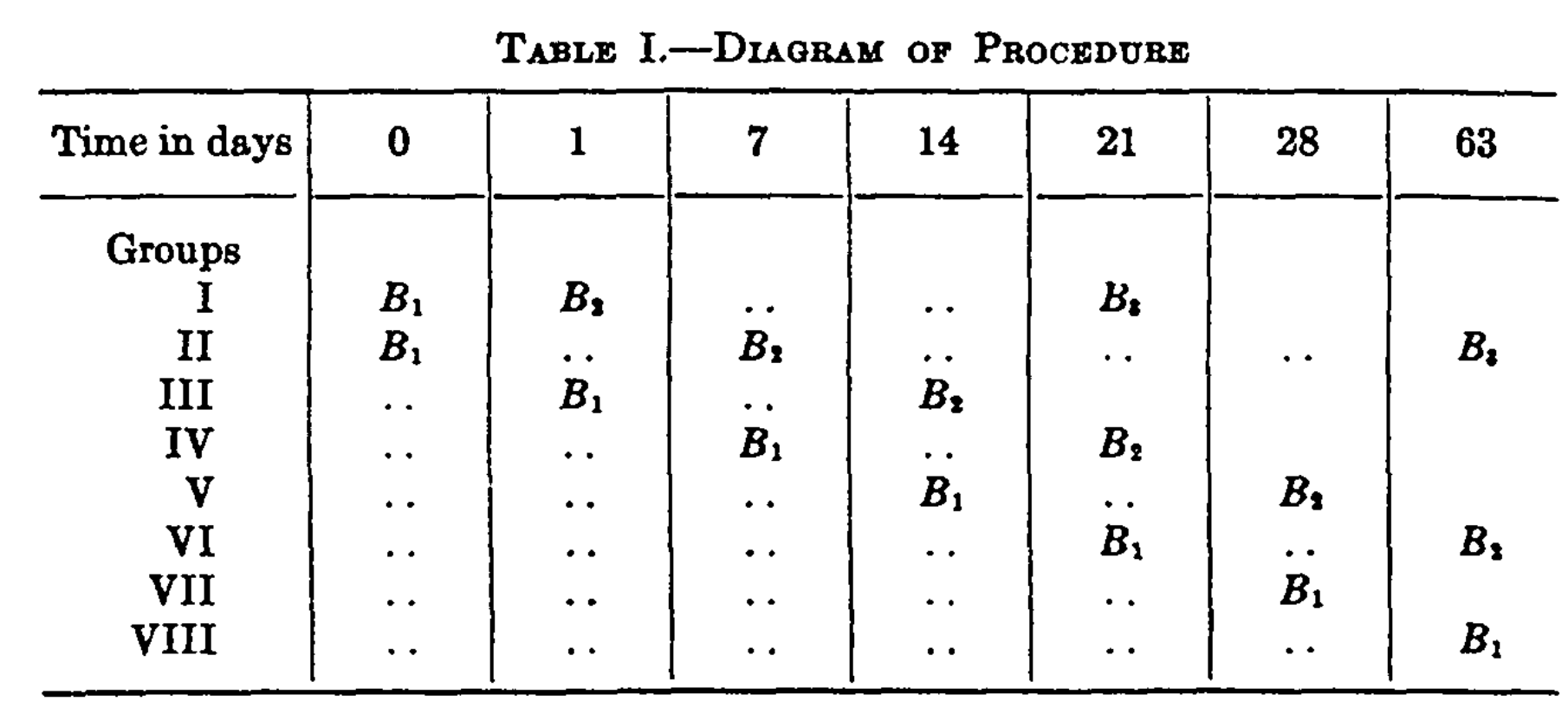
Group IX took the test twice consecutively on the initial day, in order to understand the contribution of mere repetition (almost none).
Group X took the test without having read the article, to assess prior knowledge (mean of 5.27 / 25).
Results
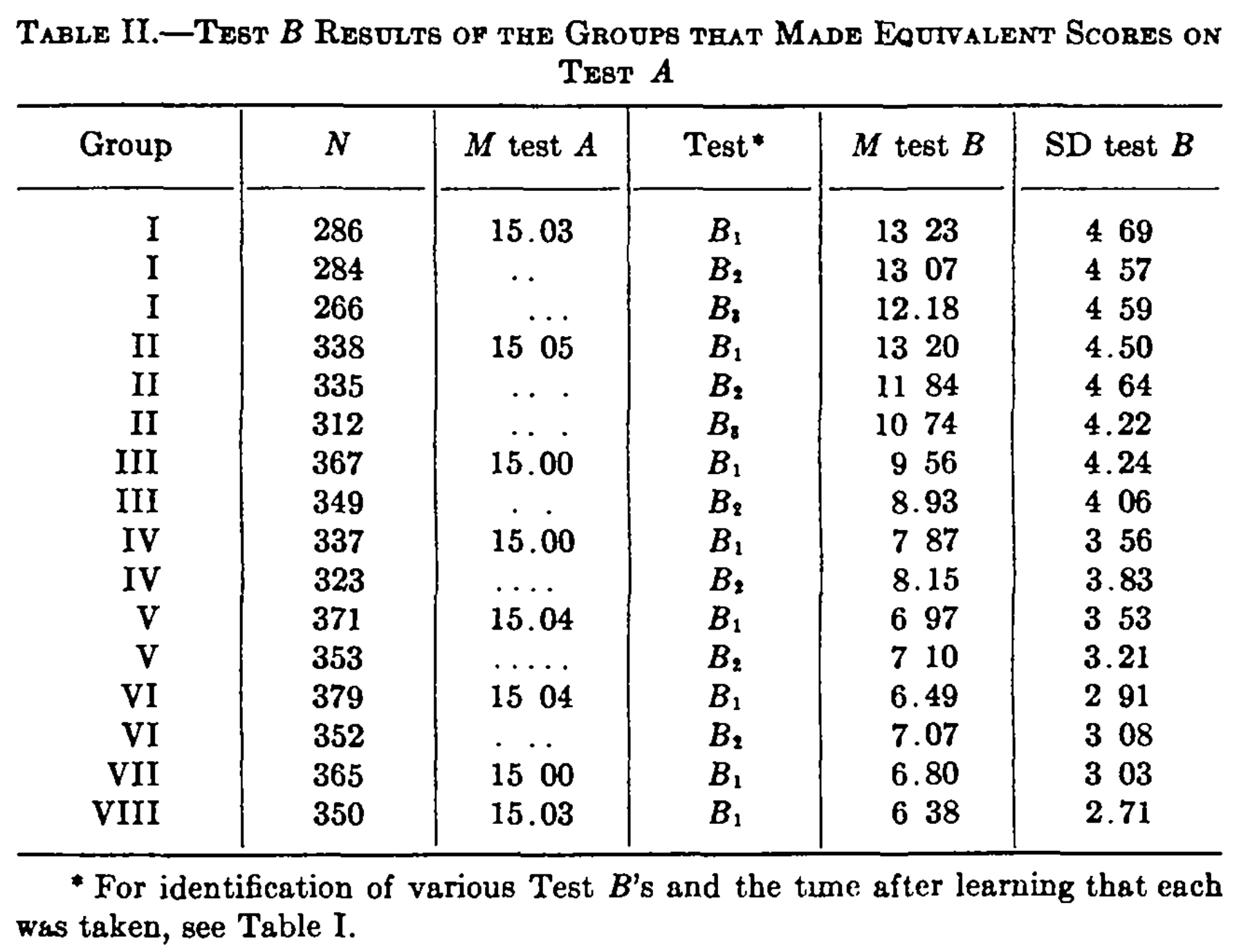
One striking result: more was forgotten in one day from the initial study (group III, B1) than was forgotten across 63 days with two recall tests (group II, B3). Waiting one day to administer the test produced a large persistent deficit for group 3.
The sequence of testing intervals were constructed so that pairs of groups’ performance which differed by one recall test could be compared: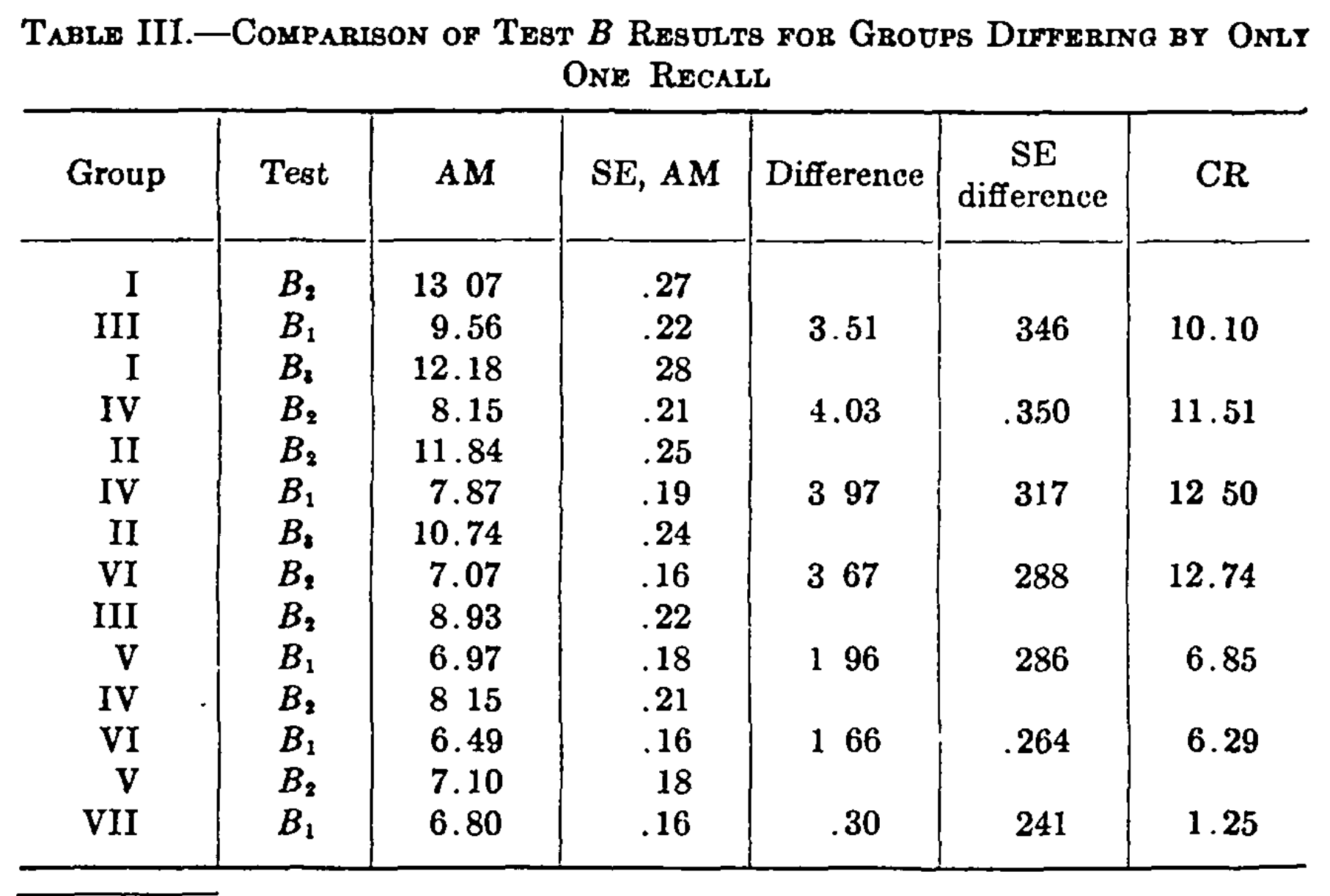
Plotted: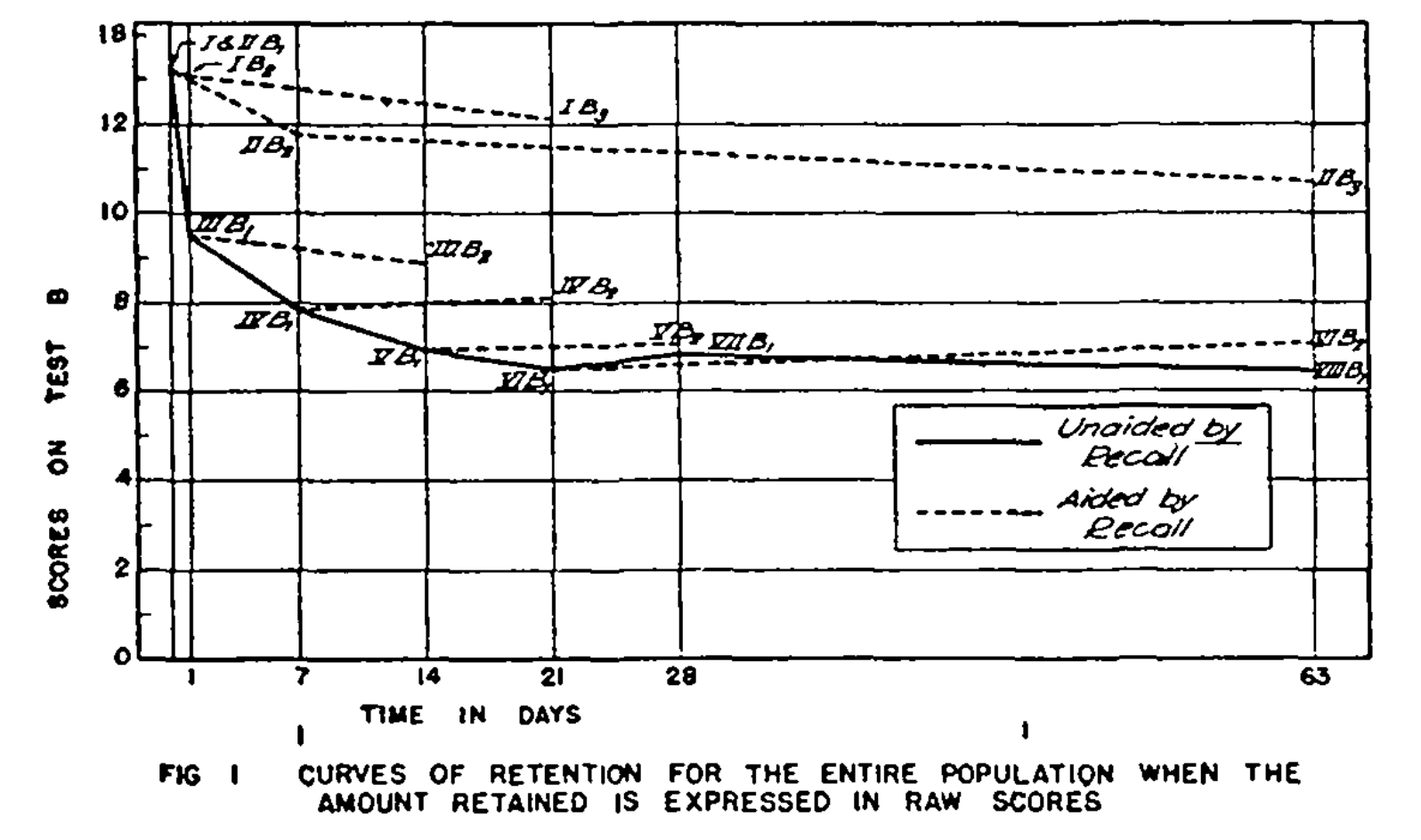
High-vs-low proficiency students
Spitzer compares the retention decay rates between higher- and lower-proficiency students according to the results of test A. He finds that the forgetting curve for the top third of students is less sharp (leveling at 21 days vs 7):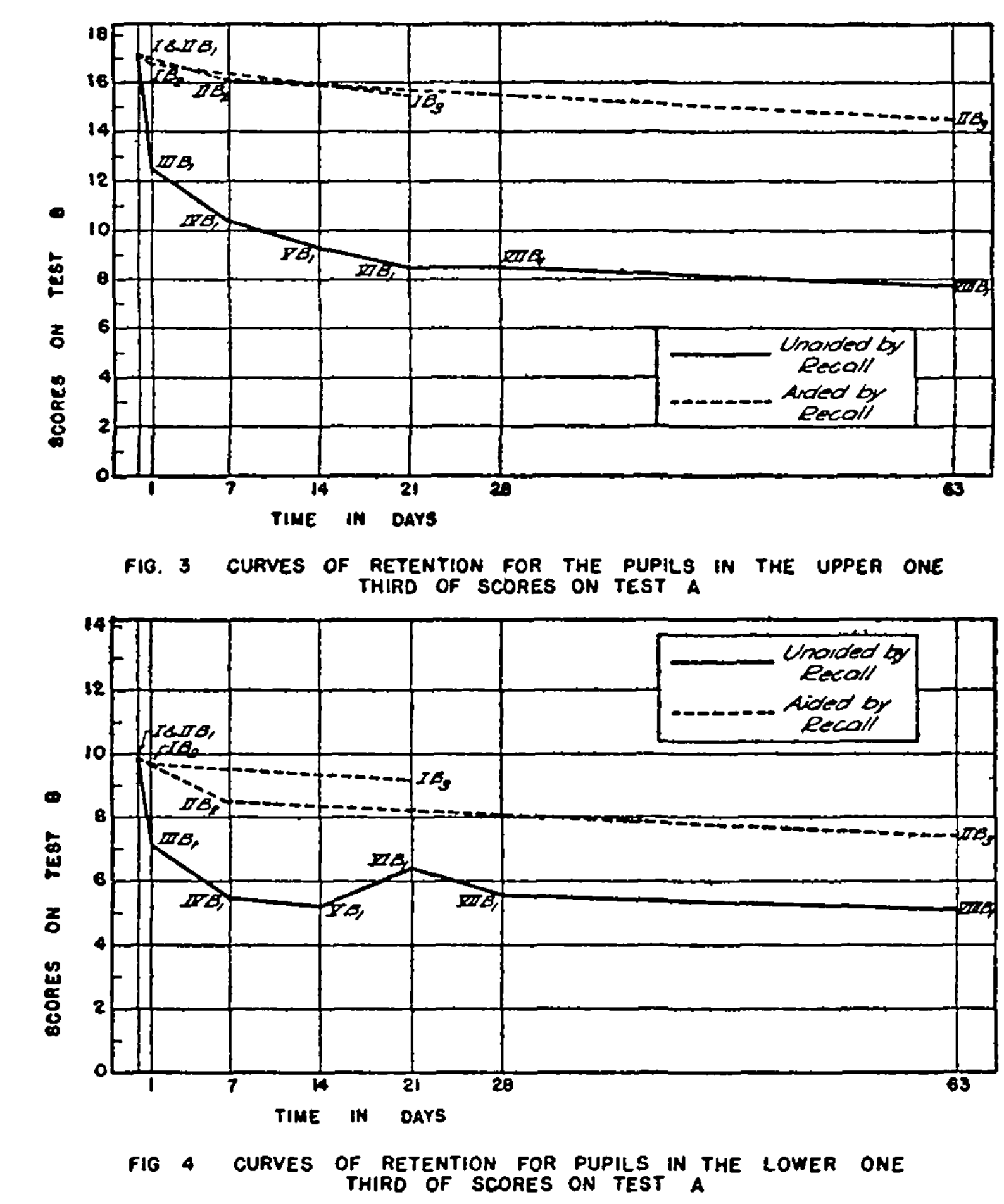
Item difficulty
Items are forgotten at somewhat different rates, e.g.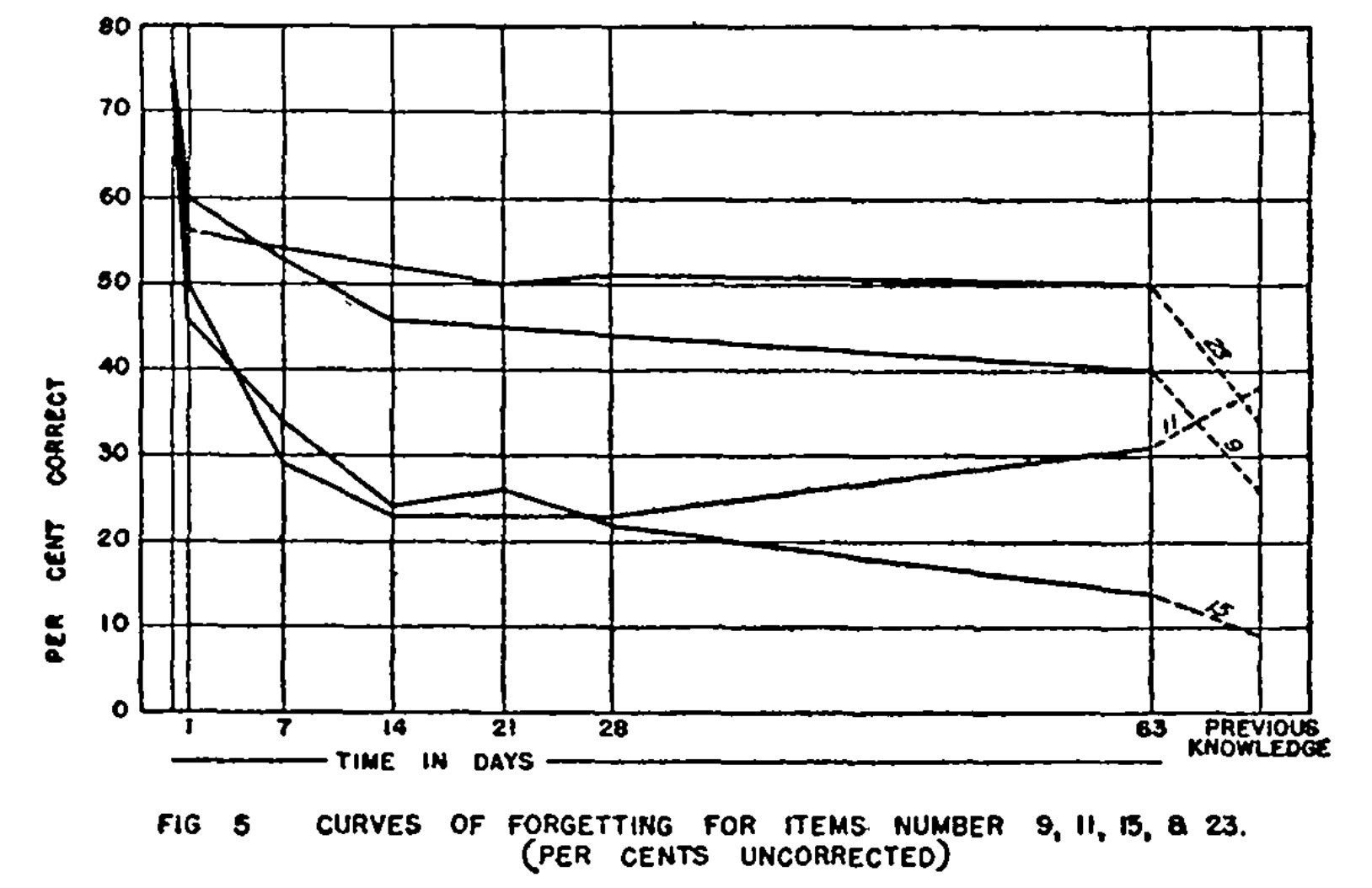
Reflections
The articles written for these students strike me as awful. A series of uninteresting sentences strung together with zero narrative arc, followed by a test on the boring details of these sentences. No wonder baseline performance is so poor. It wouldn’t surprise me if they’d done better studying these facts as a straight deck of flashcards. See in particular Most (especially early) experimental literature on the spacing effect involves inauthentic learning environments.
Q. What deficit in the literature motivated Spitzer 1939 study?
A. No evidence of the effects of recall on retention in the context of authentic classroom practice.
Q. What rough demographic were the subjects of Spitzer’s 1939 study?
A. Sixth grade students
Q. How did (estimated) student proficiency affect the forgetting curves in Spitzer’s 1939 study?
A. Higher-proficiency students forgot more slowly than lower-proficiency students.
Q. What did Spitzer (1939) discover was the effect of delayed recall practice on the rate of forgetting?
A. It dramatically slows forgetting.
Q. The performance of Spitzer (1939)’s groups on their final retrieval test mostly depended on…
A. How early their first test was given.
Q. Spitzer (1939) found that the forgetting curves of items could not be predicted from…?
A. Their initial recall rates.